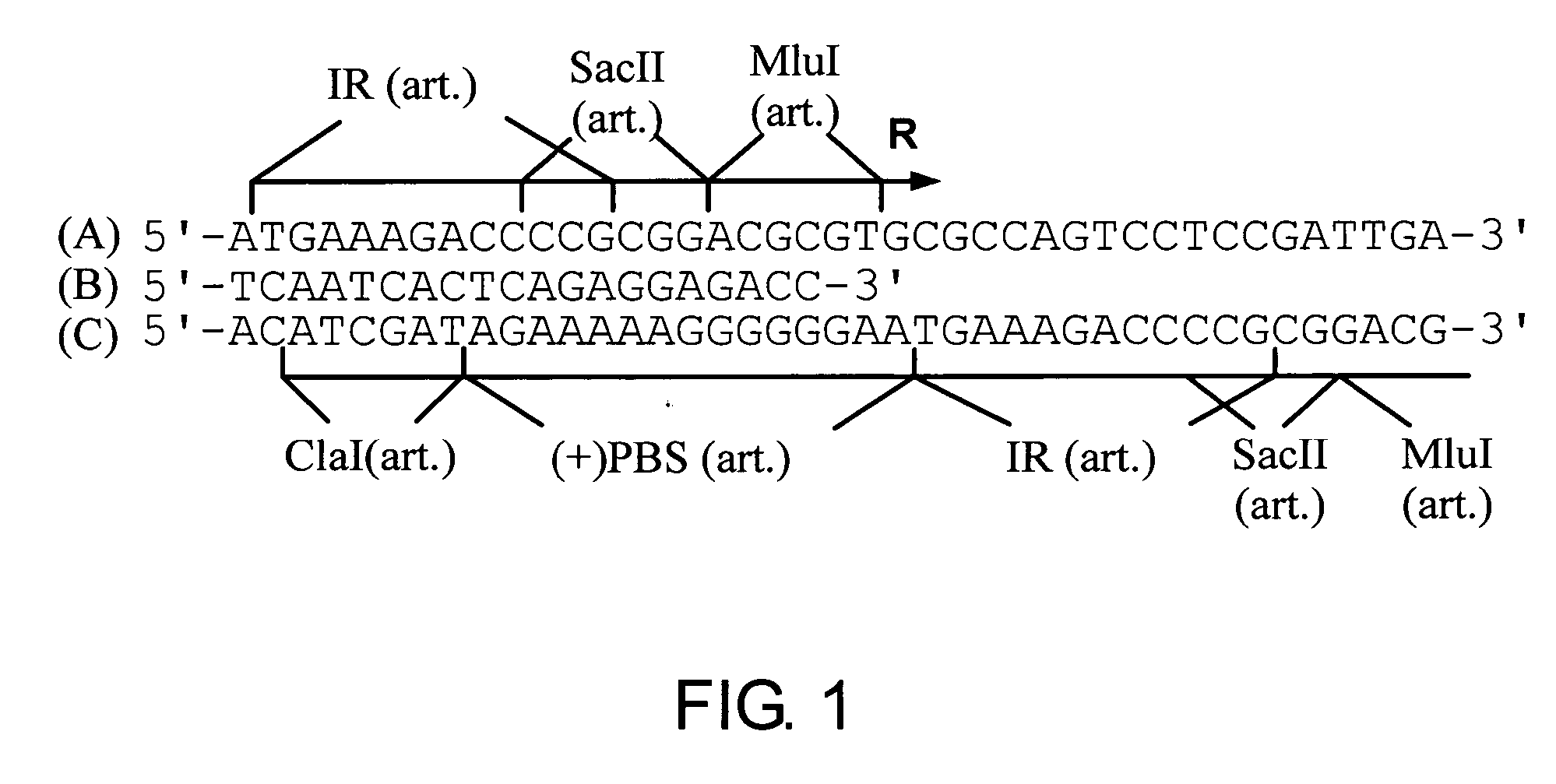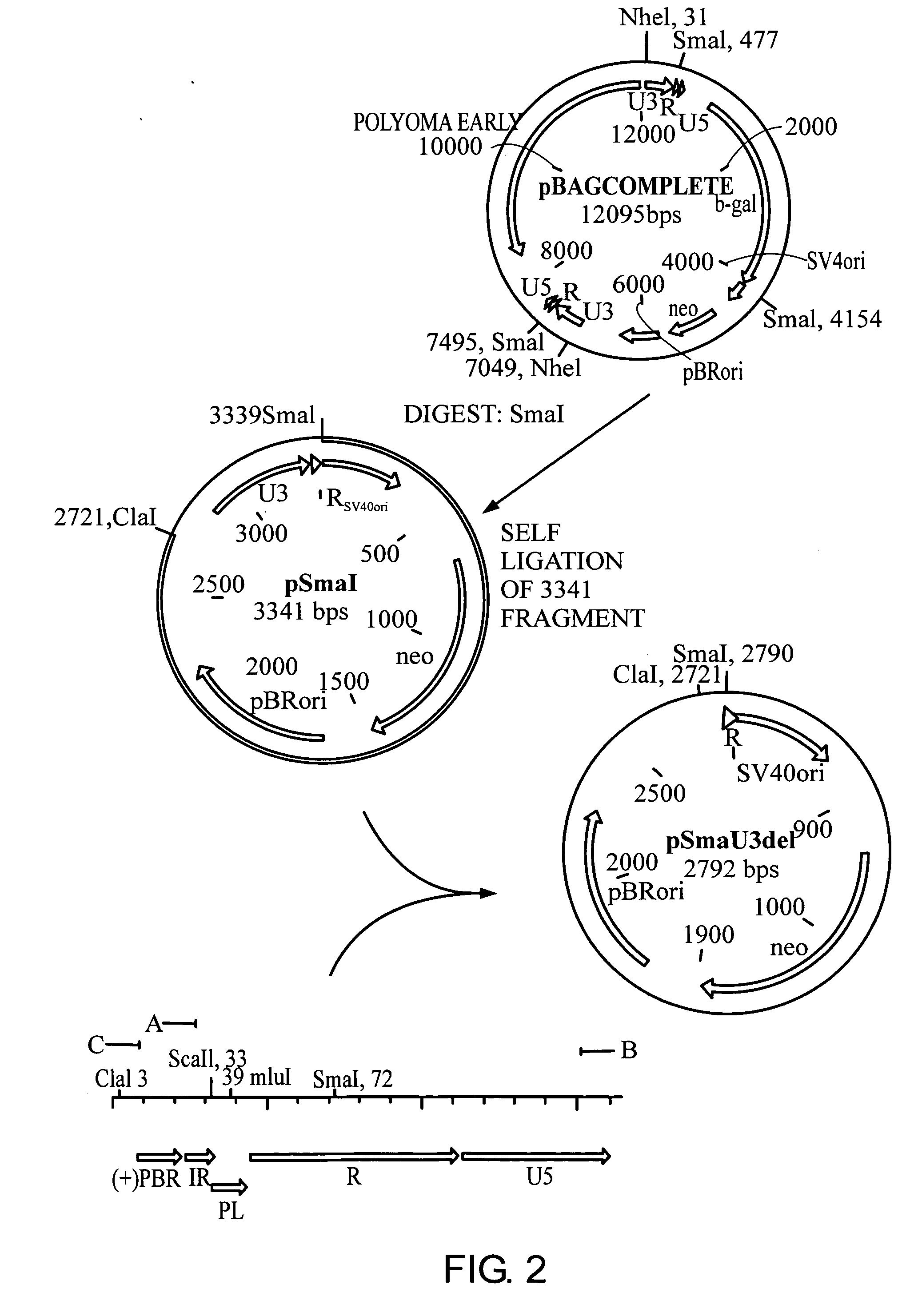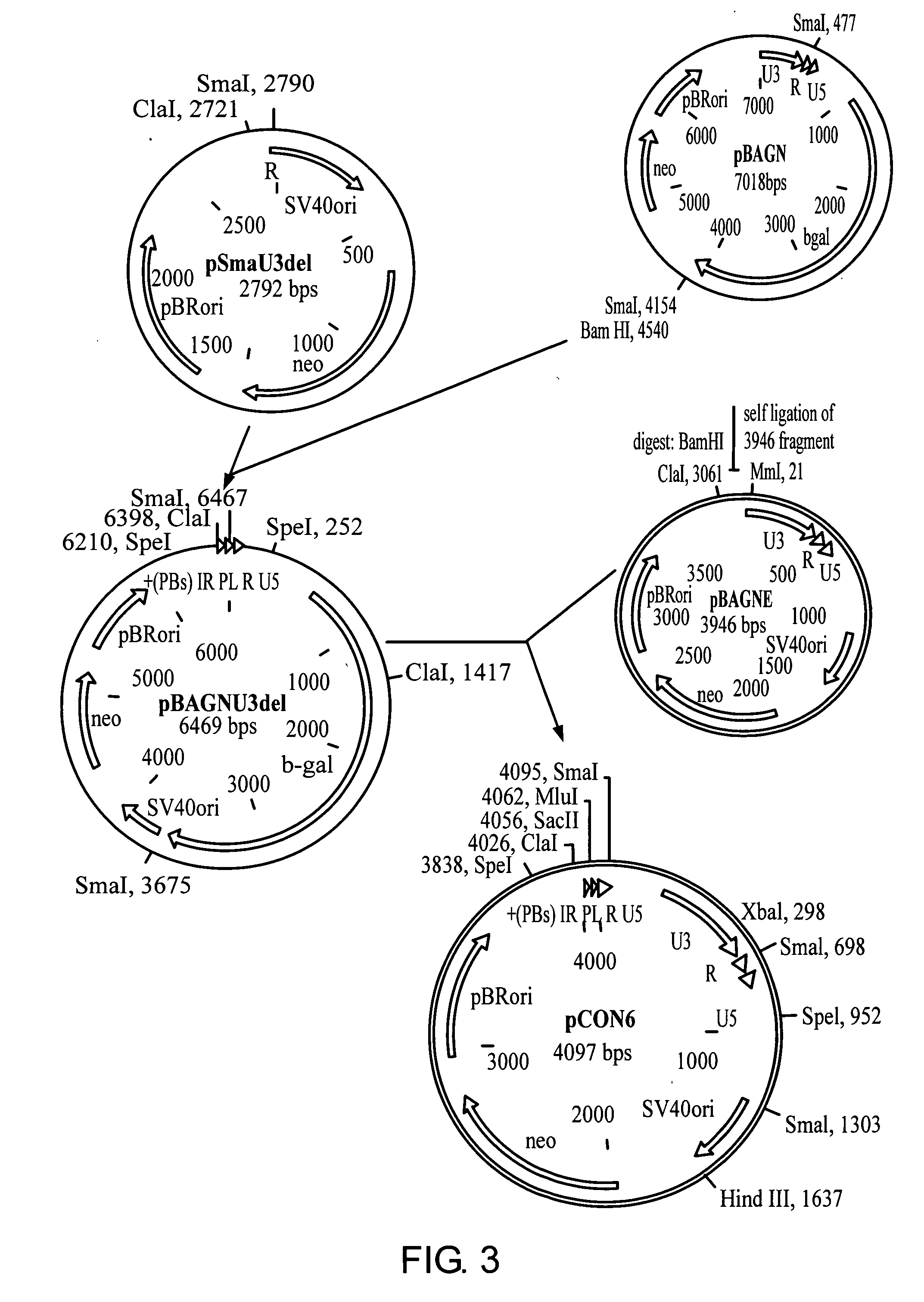Use of the WAP or MMTV regulatory sequences for targeted expression of linked heterologous genes in human mammary cells, including human mammary carcinoma cells
a technology regulatory sequences, which is applied in the field of use of wap or mmtv regulatory sequences for targeted expression of linked heterologous genes in human mammary cells, including human mammary carcinoma cells, and can solve the problems of fatal outcome, elimination of all metastases and micrometastases, and high rate of relaps
- Summary
- Abstract
- Description
- Claims
- Application Information
AI Technical Summary
Benefits of technology
Problems solved by technology
Method used
Image
Examples
example 1
Deletion of the U3 Region and Insertion of a Polylinker
[0109] In the murine leukemia virus (MLV) retroviral vector known as BAG (Price, J., et al., Proc. Natl. Acad. Sci. USA, 84:156-160 (1987)) the β-galactosidase gene is driven by the promiscuous (i.e. non-tissue specific) MLV promoter in the U3 region of the LTR. According to the present invention a derivative of the BAG vector has been constructed in which the MLV promoter (U3) located within the 3′LTR except the inverted repeat has been deleted by PCR and replaced by a polylinker. The BAG vector lacking the U3 is expressed from the MLV promoter (U3) within the 5′LTR when introduced into a packaging cell line. As a result of the rearrangments occurring in the retroviral genome during its life cycle, following infection of its target cell, the polylinker will be duplicated at both ends of the retroviral genome as described in WO-A1-9607748. Thereby a retroviral vector can be constructed in which the expression of the β-galactosi...
example 2
Cloning of pMMTVgal
[0114] The Mouse Mammary Tumor Virus (MMTV) U3-Region (mtv-2) without the inverted repeats includes a region that confers responsiveness to glucocorticoid hormones and a region containing an element that directs expression to the mammary gland.
[0115] The U3 region of MMTV was amplified by PCR using the plasmid pBG102 (a plasmid containing the 3′ LTR from mtv 2) as template with primers D and E.
[0116] The 3′ end of primer D is complementary to the 5′ end of the MMTV U3 region and carries a Sacll site in its 5′ extension (FIG. 5). The 3′ end of primer E is complementary to the 3′ end of the MMTV U3 region and has a Mlul site in its 5′ extension (FIG. 5).
[0117] After 35 cycles of annealing at 49° C. and extension at 72° C., a 1229 bp product was obtained, digested with Sacll and Mlul and ligated to the Sacll / Mlul digested vector pCON6. The resulting plasmid p125.6 (5305 bp)(FIG. 4) was digested with Xbal and Hindlll and the 4187 bp fragment ligated to the 4190 pb...
example 3
[0118] Cloning of the Whey Acidic Protein (WAP) promoter region encompassing the proximal 445 bp of the WAP promoter indlucing the transcription initiation site.
[0119] A plasmid, pWAPBAG containing the β-galactosidase gene under transcriptional control of the proximal 445 bp's of the WAP promoter was prepared by amplification of a sequence comprising the proximal 445 bp's of the WAP promoter and the first 143 bp's of the human growth hormone (HGH). The sequences were amplified from pWAP2-HGH (Günzburg W. H. et al., Molcular Endocrinology, 5:123-133 (1991)) by PCR using primers F and G. (FIG. 7). Both primers carried Sacll and Mlul recognition sites as terminal sequences. The amplified 606 bp product and pCON6 were digested with Sacll and Mlul and the 4094 bp fragment of the vector as well as the PCR product was ligated together to create pWAP.6. The β-galactosidase (β-gal) gene of E. coli was cloned into the resulting vector pWAP.6 (4687 bp) (FIG. 8); pWAP.6 as well as pBAGN were d...
PUM
| Property | Measurement | Unit |
|---|---|---|
| temperature | aaaaa | aaaaa |
| temperature | aaaaa | aaaaa |
| structure | aaaaa | aaaaa |
Abstract
Description
Claims
Application Information
 Login to View More
Login to View More - R&D
- Intellectual Property
- Life Sciences
- Materials
- Tech Scout
- Unparalleled Data Quality
- Higher Quality Content
- 60% Fewer Hallucinations
Browse by: Latest US Patents, China's latest patents, Technical Efficacy Thesaurus, Application Domain, Technology Topic, Popular Technical Reports.
© 2025 PatSnap. All rights reserved.Legal|Privacy policy|Modern Slavery Act Transparency Statement|Sitemap|About US| Contact US: help@patsnap.com



